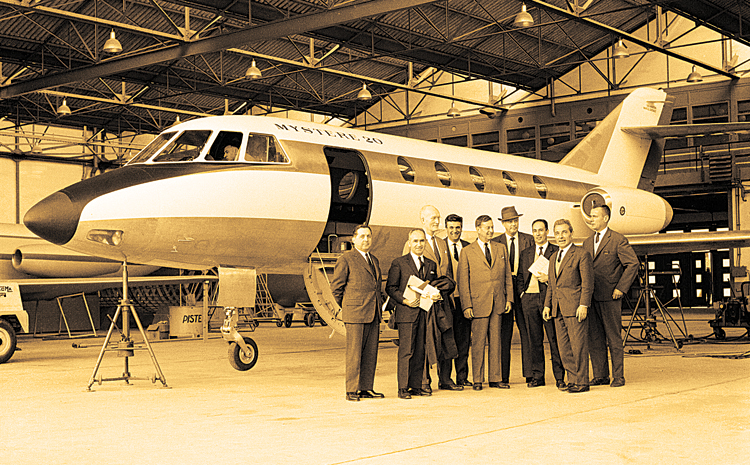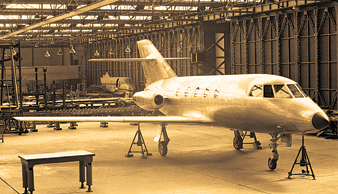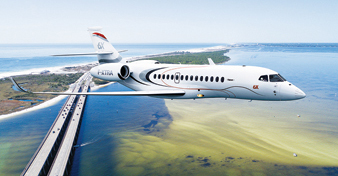INDIAN ARMED FORCES CHIEFS ON OUR RELENTLESS AND FOCUSED PUBLISHING EFFORTS

The insightful articles, inspiring narrations and analytical perspectives presented by the Editorial Team, establish an alluring connect with the reader. My compliments and best wishes to SP Guide Publications.

"Over the past 60 years, the growth of SP Guide Publications has mirrored the rising stature of Indian Navy. Its well-researched and informative magazines on Defence and Aerospace sector have served to shape an educated opinion of our military personnel, policy makers and the public alike. I wish SP's Publication team continued success, fair winds and following seas in all future endeavour!"

Since, its inception in 1964, SP Guide Publications has consistently demonstrated commitment to high-quality journalism in the aerospace and defence sectors, earning a well-deserved reputation as Asia's largest media house in this domain. I wish SP Guide Publications continued success in its pursuit of excellence.
- The layered Air Defence systems that worked superbly, the key element of Operation Sindoor
- Operation Sindoor | Day 2 DGMOs Briefing
- Operation Sindoor: Resolute yet Restrained
- India's Operation Sindoor Sends a Clear Message to Terror and the World – ‘ZERO TOLERANCE’
- Japan and India set forth a defence cooperation consultancy framework, talks on tank and jet engines
Dassault Celebrates 60 Years of Falcon Business Jets
As its advanced new models prepare to take the stage, Dassault looks back at its six decades journey

May 4, 2023, marked a significant milestone for Dassault Aviation as it celebrated the 60th anniversary of the first flight of the Dassault Falcon 20, which later became the foundation of the renowned Falcon jet family.
In the aftermath of World War Two, the French government recognised the importance of the country’s aviation sector and encouraged French plane manufacturers to develop aircraft that could rival those of the United States and Great Britain. Dassault Aviation, already renowned for its sleek Mirage fighters, embraced this challenge and on May 4, 1963, introduced the Mystère 20, its first business jet. Recognising the potential in the American market, the aircraft was later rebranded as the Falcon 20. And today, after more than 2,700 business jets delivered, Dassault Aviation continues to uphold its tradition of crafting beautiful, advanced-technology aircraft.
Marcel Dassault, the founder of Dassault Aviation, famously stated, “For an aircraft to fly well, it must be beautiful.” This sentiment was embodied in the Falcon 20, which captivated aviation leaders such as Charles Lindbergh, Juan Trippe (CEO of Pan Am), and Fred Smith (founder of FedEx), states the aerospace manufacturer. “The formula has not changed. Every Dassault aircraft must have superb handling, beautiful lines, and rugged construction. And, of course, it has to provide state-of-the-art comfort,” said Dassault Aviation’s Chairman and CEO Eric Trappier.

The Falcon 20 became the precursor to 25 different model types, attracting not only entrepreneurs but also government agencies and armed forces worldwide. Its pioneering safety features, including the utilisation of robust fighter structures and systems, set new standards for safety advancements in the industry, including technologies like head-up cockpit displays and digital flight controls.
In 1966 the aircraft was first renamed the Dassault Fan Jet Falcon and soon after shortened to the Dassault Falcon 20. Over the coming years, various improvements were made, and because of the aircraft’s popularity, Dassault began work on variants like the smaller Falcon 10 and larger 30-seat Falcon 30. The Falcon 30 then led to the three-engined Falcon 50. In total, during its production run between 1965 and 1991, Dassault built 512 examples of the Falcon 20.
“Those past decades have allowed us to build the legacy and the technical grounds which makes us confident in our ability to develop future airplanes that fit our customer expectations. Sixty years on, Falcons are still completely distinctive in the business jet world: beautiful, delightful to fly, and always on the leading edge of technology, bringing safety, comfort, and productivity benefits to their operators,” said Trappier.
WHEN THE BIRD WAS FOUND
The inaugural flight of the Falcon 20 took place on May 4, 1963. The flight was scheduled later in the day due to the presence of Charles Lindbergh, who visited the Dassault assembly plant in Mérignac, France, to inspect the new business jet on behalf of Pan Am. After Lindbergh’s departure, the aircraft was prepared for its historic flight. Lindbergh was so impressed with the Falcon 20 that he reportedly wired Juan Trippe, the CEO of Pan Am, saying, “I’ve found our bird.” This led to Pan Am’s order of 40 units, with an option for an additional 120, and the establishment of Pan Am Business Jets, which eventually evolved into Dassault Falcon Jet (DFJ), wholly owned by Dassault Aviation. DFJ now represents and supports Falcons in the United States and the Western Hemisphere from its headquarters in Teterboro, New Jersey.
In 1973, Fred Smith propelled FedEx to success with a fleet of 33 Falcon 20s modified with large cargo doors. The US Coast Guard also recognised the Falcon 20’s capabilities and ordered 41 units, designated as the HU-25, for search and rescue missions. Overall, Dassault produced nearly 500 aircraft from the 20-series.
With more than 2,130 Falcons currently operating in over 90 countries, the Falcon 2000 series stands as the best-selling model, offering exceptional fuel efficiency and economy across its various iterations. The Falcon 900 series, known for its versatility and consistent updates, follows as the second-best seller, with 553 deliveries, including two recently delivered to the Royal Air Force for VIP transportation. Additionally, the Falcon 7X/8X, featuring fly-by-wire technology, has gained popularity, with approximately 400 aircraft delivered.
TRACING BACK THE HISTORY
The Falcon 50 was the first civil aircraft with supercritical wings, improving transonic performance and high-lift characteristics for better handling at high speeds and in challenging conditions. The series was updated with the 2000EX in 2002, featuring PW308C turbofan engines, an EASy flight deck, and a range of 3,878 nm. The 2000LX, the current version introduced in 2009, added blended winglets and increased the range to 4,000 nm. In 2001, Dassault announced the Falcon 7X, an ultra-long-range trijet with a range of 5,950 nm. It became the first fully fly-by-wire business jet, incorporating Dassault’s digital flight control system. The Falcon 8X, introduced in 2009, offered a longer range of 6,450 nm and up to 20 per cent better fuel efficiency than other ultra-long-range aircraft. It featured FalconEye, a combined vision system head-up display, and a three-zone cabin with advanced amenities and connectivity.


Today, Dassault’s values, design ethos, and relentless focus on elegant lines inside and out are embodied in two new airplanes, the 5,500 nm Falcon 6X and the 7,500 nm Falcon 10X. These two jets, boasting the largest cabins by cross-section in business aviation, redefine long-range comfort and have been recognised with prestigious interior design awards. These are the two largest cabins by cross section in business aviation, setting a new standard for long-range comfort.
The Falcon 6X, set to enter service this year, features Dassault’s most advanced digital flight control system to date. Meanwhile, the Falcon 10X, currently in the early stages of assembly, will offer even more advanced systems and safety features.
From the inaugural flight of the Falcon 20 to the introduction of state-of-the-art models like the Falcon 6X and 10X, Dassault has consistently pushed the boundaries of what is possible in business aviation. Dassault Aviation’s celebration of 60 years of Falcon business jets is a testament to the company’s unwavering commitment to innovation, design excellence, and customer satisfaction, the company underlined.
60 YEARS OF INNOVATION
 | 1963When Falcons were known as Mystère 20s, they caught the Eagle eye of famous aviator Charles Lindbergh, who visited Dassault and reported to his Pan Am CEO, Juan Trippe, that he was “tremendously impressed”. With that, their search for a business aircraft ended and hundreds were ordered. |
1976The Falcon 50 ushered in a new era of business aircraft that could fly trans-continental and transoceanic safely and comfortable. It was the first with a trijet layout and the first civil aircraft with a supercritical wing. And it launched Dassault’s computer-aided design leadership. | |
1983A tough economy didn’t stop Dassault from responding to user demand for longer range and more comfort. The Falcon 900, launched at the Paris Airshow, was the first business jet designed as a digital model and had the first cockpit with an electronic flight instrument system. | |
1993Based on fighter jet technology pioneered by Dassault, the Falcon 2000 became the first civilian aircraft equipped with a Head Up Display (HUD). HUD equipment allowed Falcon pilots to hand fly approaches to CAT III minimums — the most difficult approaches to fly. | |
2001The historic and dazzling launch of the Falcon 7X introduced digital fly-bywire, the EASy flight deck and composite materials to the business jet world, innovations derived from Dassault’s fighter aircraft. Its 3D digital development was all-encompassing, from design to production. | |
2013The Falcon 2000LXS twinjet became one of the most popular large-cabin business jets in the world, especially in the US It’s a unique combination of airfield agility, fuelefficiency, quiet and widebody comfort. The ultimate 2000 Series refinement, it includes the EASy II cockpit. | |
 | 2021Another historic year for Falcons came with two new programmes in development simultaneously. The Falcon 6X and the Falcon 10X. Each in its own way groundbreaking. In cabin size and flexibility. In flight deck technology, aerostructures and wing architecture. And more to come. |
Source: www.dassaultfalcon.com/about-us/





